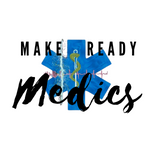Hey there, dedicated healthcare warriors! If you’re in the emergency medical field, you know that every second counts, especially when it comes to treating our littlest patients. Pediatric emergencies can be particularly challenging, given the unique considerations for dosages, equipment sizes, and treatment protocols. That’s where Emergency Reference Charts come into play, and trust me, they’re game-changers. Let’s dive into why these charts are an absolute must-have for managing pediatric emergencies.
Why Pediatric Emergencies Are Different
Kids are not just tiny adults; their physiology is different, and so are their medical needs. The margin for error is often much smaller, making it crucial to have accurate and easily accessible information at your fingertips. That’s where Emergency Reference Charts come in handy.
What Are Emergency Reference Charts?
Think of these charts as your quick-reference guide, a cheat sheet if you will, that provides essential information like medication dosages, equipment sizes, and vital signs, all tailored to the pediatric population. They’re often laminated or available as a mobile app, making them both durable and easily accessible.

Advantages of Using Emergency Reference Charts
Speeds Up Decision-Making
In an emergency, time is of the essence. Having a chart with all the essential information allows you to make quicker, more informed decisions without having to sift through a manual or rely on memory.
Reduces Errors
Let’s face it, even the best of us can make mistakes, especially in high-stress situations. These charts act as a safety net, helping to ensure that you administer the correct dosages and use the right equipment.
Boosts Confidence
Knowing that you have a reliable source of information at your disposal can significantly boost your confidence, making you more effective in emergency situations.
Enhances Team Coordination
When everyone on the team has access to the same reference material, it streamlines communication and coordination, which is vital in emergencies.
Easy to Update
New guidelines and protocols are continually being developed. The beauty of these charts is that they can be easily updated or replaced, ensuring that you always have the most current information.
How to Get the Most Out of Your Charts
- Familiarize Yourself: Take some time to get to know the layout and content of your chart before you find yourself in an emergency situation.
- Training: Use the charts during training exercises to simulate real-life scenarios. This will help you become more comfortable with them.
- Accessibility: Make sure the charts are easily accessible, whether that means having laminated copies in key locations or using a mobile app.
- Regular Updates: Keep an eye out for updated guidelines and protocols. Make sure to replace outdated charts as needed.
Wrapping It Up
So there you have it, folks! Emergency Reference Charts are an invaluable tool for managing pediatric emergencies. They help you make quicker decisions, reduce errors, and ultimately provide better care for your pint-sized patients. If you haven’t already incorporated these into your practice, what are you waiting for? Your future self (and your little patients) will thank you!

